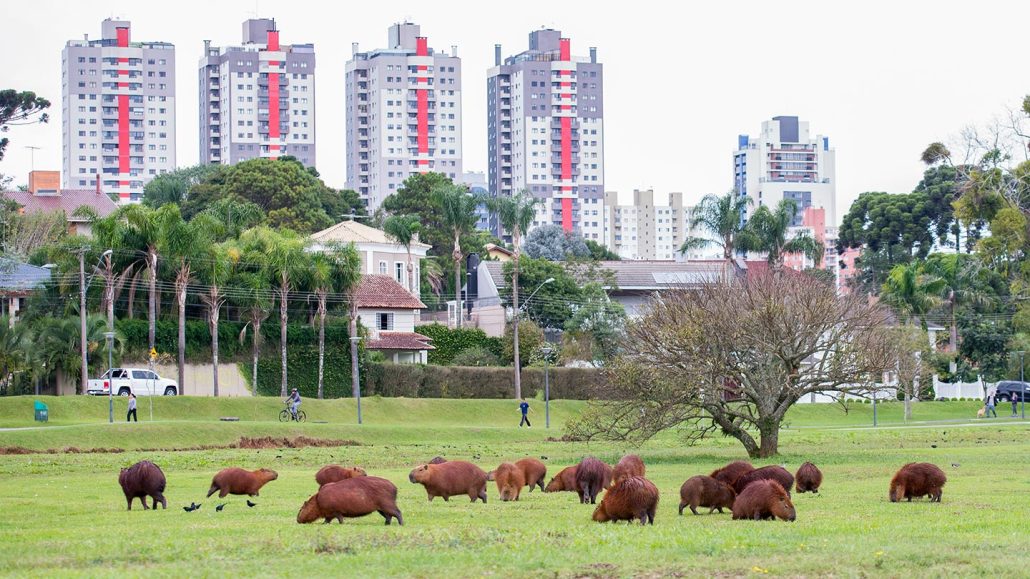
As humans have broken up ecosystems across South America, capybaras have still thrived, possibly by expanding what they eat. Here, a herd of the rodents of unusual size grazes in a park in Curitiba, Brazil.
Luciana Calvin/Moment Open/Getty Images

As humans have broken up ecosystems across South America, capybaras have still thrived, possibly by expanding what they eat. Here, a herd of the rodents of unusual size grazes in a park in Curitiba, Brazil.
Luciana Calvin/Moment Open/Getty Images